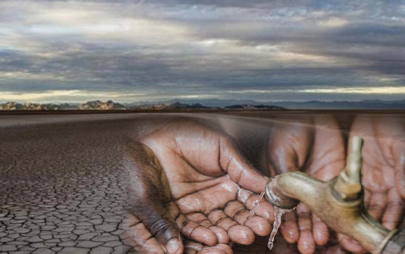
Life on Earth requires nothing more than water and our ability to overcome water scarcity. From central Australia to sub-Saharan Africa and megacities in Asia, there is water scarcity. People are struggling to get clean water for drinking, cooking, bathing, washing hands, and growing food.
The water crisis is a health crisis. About 1 million people die each year from water, sanitation, and hygiene- related diseases that can be reduced with access to safe water or sanitation. As we tackle the COVID-19 epidemic, access to safe water is now more important than ever for the health of families around the world.
The time spent collecting water or getting sanitation is responsible for billions of lost economic opportunities. Lack of basic water and sanitation causes 260 billion in global losses each year. Access to safe water and sanitation in the home, turning the time spent into saving time, gives families more time to get education and work opportunities that will help them break the cycle of poverty.
Reasons for the water crisis
A quarter of humanity faces a water crisis, including the possibility of running out of water, which seems inconceivable when 70 percent of the earth’s surface is water. However, 80 percent of available surface and groundwater is used each year, and global water demand is projected to increase by 55 percent by 2050. Why the world is facing a water scarcity crisis and what is the reason for increasing water demand.?
The first cause of water stress worldwide is the growing human population at the same time as the water supply has remained the same. With about one billion more inhabitants on Earth every 15-20 years, this has led to a progressive deficit in the global water supply.
Another reason is the uneven concentration of the global population. In some regions there is no clear link between population presence and water presence, in other words, water is not where we want it all the time. For example, there is what we call, southern Spain, from Pakistan to the Horn of Africa, and back to the “Triangle of Thirst. In this triangle, you have about two billion people in a water -scarce region.
By comparison, if you go to Russia or Canada, they have more water than they need in terms of their population size. So this is another crucial reason why are facing water scarcity crisis in some parts of the world – but not everywhere.
Climate [change] will be the fruit on the cake. We currently have global population growth and later we will have climate change affecting water availability. But at the moment, however, the problem for water suppliers and political leaders is the demographic crisis we are facing – not the climate.
Work Towards The Solution
World Vision is a leading humanitarian provider of clean drinking water in the developing world. People are focused on delivering water to the poorest people in rural areas with the highest disease burden including people with disabilitics. In 2018, clean water reached more than 4 million people through World Vision projects.
More than 700 World Vision Water, Sanitation and Hygiene (WASH) professionals and thousands of development professionals live and work communities around the world to co-create sustainable solutions. World Vision fights the water crisis to keep water flowing. They invest an average of 15 years’ community, cultivate local ownership, and train locals to operate and maintain a water point.
An independent study by the Water Institute at the University of North Carolina, one of the leading academic groups in water research, examined 1,470 water sources in 520 communities located in the Greater Ephraim Plains region of Ghana. Their report, published in 2015, shows that about 80 percent of the wells drilled by World Vision continue to operate at high level even after 20 years, largely thanks to our community engagement model.
Conclusion
At current consumption rates, this situation will only get worse. By 2025, two- thirds of the world’s population could face water scarcity And ecosystems around the world will suffer more.



